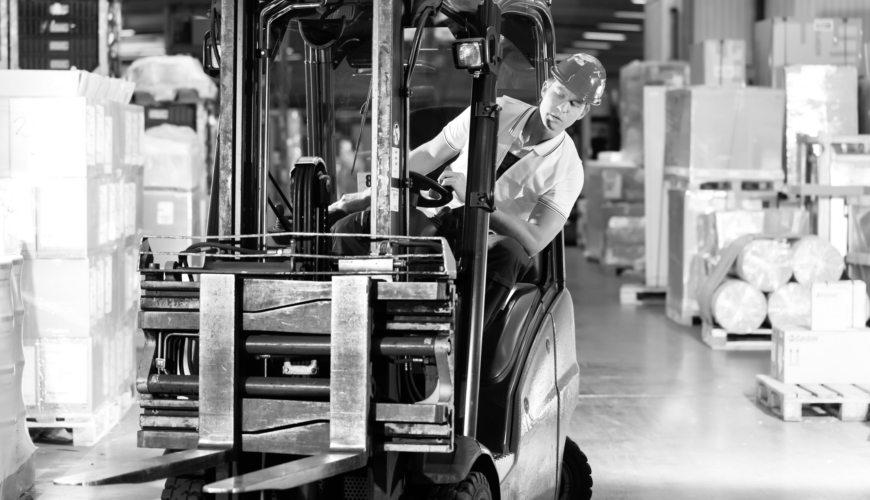National Forklift Safety Day is an event that underscores the pivotal role of warehouse design in forklift safety. By understanding and implementing key aspects of warehouse design, you can significantly enhance safety and efficiency when using forklifts, thereby contributing to a safer work environment.
Aisle Width:
The width of warehouse aisles is not just a design element but a crucial factor that directly impacts the efficiency of your material handling operations, safety, and overall space utilization. Standard aisle widths, ranging from 12 to 14 feet, are designed to accommodate standard forklifts, while narrow aisle widths, ranging from 8 to 10 feet, are for narrow aisle forklifts. Very narrow aisle widths for specialized equipment, ranging from 5 to 7 feet, are the norm.
Racking Systems:
Warehouse racking systems are essential components in storage facilities, designed to maximize the use of vertical space and improve inventory management. Various racking systems are tailored to specific storage needs and operational requirements. Common racking systems used in warehouse designs include:
- Selective Racking: Common and versatile, allowing direct access to each pallet.
- Drive-In/Drive-Through Racking: Allows forklifts to enter the racking structure but requires careful maneuvering.
- Push Back Racking: Increases storage density and reduces aisle space but may complicate access.
- Pallet Flow Racking: Utilizes gravity and is ideal for FIFO inventory management.
Flooring:
Choosing the right warehouse flooring involves balancing durability, safety, maintenance, and cost considerations. Key considerations and types of warehouse flooring that work best with forklifts are flatness and levelness, which are critical for the stability and safety of forklift operations. The surface material, like concrete, should be durable, with proper traction coatings.
Traffic Management:
Effective warehouse traffic management is crucial for maintaining forklift safety in a warehouse environment. It involves planning and controlling the movement of people, vehicles, and goods within the warehouse to minimize risks and streamline operations. Strategies for warehouse traffic management include clear signage by marking aisles, loading zones, and pedestrian walkways. The use of one-way systems reduces the risk of collisions. Speed limits should be clearly marked and enforced to ensure safe forklift operation.
Safety Features:
Warehouse safety features are essential to protect workers, equipment, and inventory while ensuring efficient operations. Implementing these features reduces the risk of accidents, injuries, and damage, contributing to a safer and more productive work environment. Consider using guardrails and barriers such as structural columns and separate pedestrian areas from forklift paths. Use adequate illumination to avoid forklift accidents in dim areas, and convex mirrors at blind corners to enhance visibility.
Loading and Unloading Zones:
Loading and unloading zones are critical areas where goods are transferred between transport vehicles and warehouse storage areas. Efficiently managing these zones ensures smooth operations, minimizes delays, and maintains safety. Consider installing dock levelers to ensure a smooth transition between the warehouse floor and the truck bed. Dock shelters and seals protect goods from weather and maintain internal climate control.
Implementing these design principles and forklift safety practices enhances operational efficiency and significantly reduces the risk of forklift accidents in a warehouse environment. For more information on ways to prevent forklift hazards, contact www.osha.gov and www.osha.gov/forklifts.


